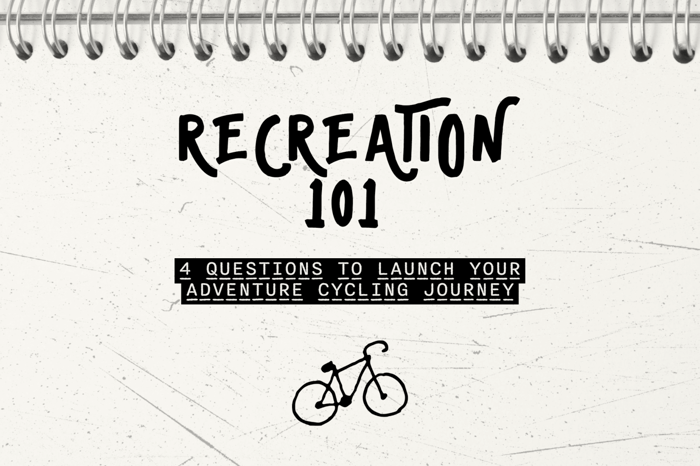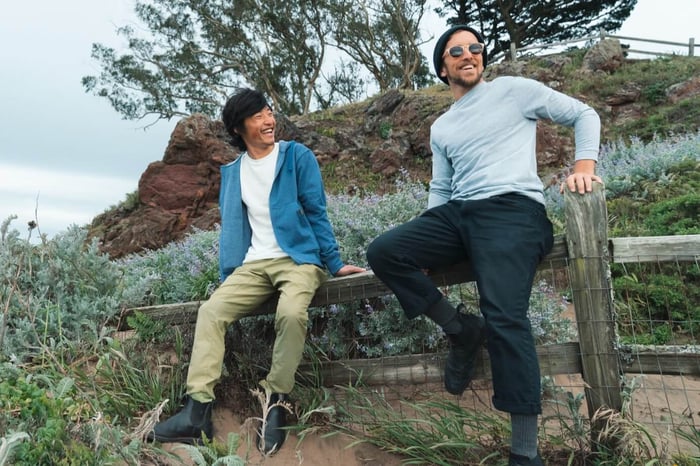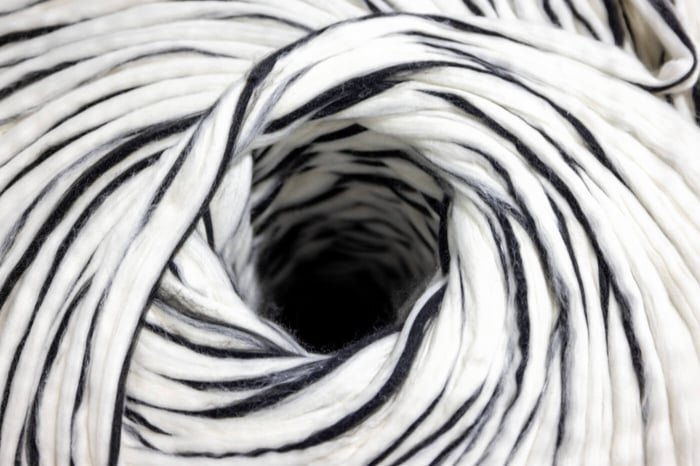Credited with developing the first bicycle in 1817, German Inventor Karl von Drais’ intention was to create an alternative mode of transportation that relied less on horses (and their need for food, medical care, boarding, etc.) and more reliant on human power. Skip forward a quick 206 years to today and plenty has changed from that first two-wheeled contraption. The concept of using bikes to travel farther, faster, and to new places, however, remains the same.

Photo: Samuel Martin
.
Various forms of adventure cycling, including Bikepacking, Bike Touring, Bikerafting, and more have seen a sharp uptick in interest over the past number of years. While there are some definitive differences amongst each of these styles of bike-based adventures, the general concept is the same and simple at its core. Each simply combines biking and backpacking.
Considering the origins of Recover date back to 2009 when founders Bill Johnston and John Riddle came up with the idea for Recover while riding bikes, we thought it was only appropriate for us to provide you with some basic framework for your own pedal powered adventure.

Photo: Adam Bratton
#1 - What type of experience are you looking for?
Like most outdoor pursuits, our personal motivators and childlike playful minds dictate our dreamy adventures. This is likely very different for each of us. The first question to ask yourself is what do you want to get out of the experience? Is it to test yourself physically or mentally? Is it to explore a previously unseen corner of the world (or your neighborhood)? Is it a way to break up the typical routine and blow off some weekend steam?

Photo: Bill Johnston
Bicycle travel offers up endless options, but identifying what you personally want to get out of the experience is the first step to getting the ideas flowing.
Our short film entitled “Local Supply Cycle” is a perfect example of a single-day bike adventure with a purpose … we wanted to show the difference between our hyperlocal US supply chain and the mass produced supply chain where products are shipped back and forth around the world.
#2 - What type of bike do you have/need?
Understanding how different bikes interact with different surfaces will dictate what type of trip is reasonable. Bikepacking is primarily focused on seeking dirt, gravel, service roads, and trails so a mountain bike or rugged gravel bike is preferred. Bike touring gravitates to paved surfaces so a standard road bike is more ideal. Your bike selection will determine what type of terrain you can tackle as well as dictate how much gear you can handle on your bike as you will see below.
#3 - What other gear do you have/need?
Any type of multi-day adventure requires additional gear that is otherwise not needed on a typical afternoon ride. At a minimum, a change of clothes, extra food, electronics (phone/navigation/chargers, etc) toiletries, first aid kit, water filter, patch kits, spare tubes, etc.
Naturally, campouts also require a tent (or hammock and straps), sleeping bag/pad/pillow, headlamp, matches/lighter, campfire stories, and s’mores.
If you want to get really sporty bikerafting adds another layer of paddling into the mix which means you’ll need even more gear, for even more fun.
It’s important to focus on items that you truly need vs items that you want. Keep in mind that all of this gear must go somewhere and that aiming for items that can serve multiple uses is key. Recover’s new Sport Elite Collection includes a full line of tanks, shirts, sun hoodies, and bike jerseys that are all perfect pieces for different types of adventures.

Photo: Samuel Martin
There are tons of bikepacking bag, rack, and strap options out there if you really start getting into things and want to up your game but also know that if you are just testing things out, a basic backpack also does the trick. (Pro Tip: Recover has collaborated with fellow 1% For The Planet member, MoosePacks, on making bikepacking bags from recycled materials.)
#4 - How long/far do you want to go?
Depending on your answers above, your tolerance for adventuring, and your thirst for riding, you’ll likely start to formulate some low hanging fruit of a route or area that you want to explore. There is no right or wrong answer here … find what works best for you.
Many riders just getting into the sport, test things out with an overnighter to a local campground or state park and slowly graduate to longer and more complex trips. Other riders aim for the stars and seek out multi-day trips in areas that are wildly un-explored. Both of which have their benefits.

Photo: Adam Bratton
Each of these 4 simple questions are meant to initiate thoughts, ideas, and inspiration in your minds. Naturally, all of your answers will have additional details specific to you (work/family obligations, gear wants/needs, riding abilities, geographical location, etc.) and the inevitable weather changes or “in-route” adjustments are always up for consideration.

Photo: Bill Johnston
At the end of the day, there is a reason why so many people are jumping on the bikepacking bandwagon lately. This style of riding allows for new ways to explore, to see the world from a different speed, to get out from behind the windshield, and truly immerse ourselves in our natural environment.
Whatever your answers are, and wherever your adventures take you, happy pedaling!
///
Recover has partnered with Human Powered Movement for a yearlong series of “Recreation 101” topics to provide adventurers with tools, information, and knowledge to get outside more often and appreciate our natural environment in new ways. If you want to learn more about Adventure Cycling, check out “What is Bikepacking?” session Recap Video below and read a recent Human Powered Movement Journal entitled “What is Bikepacking and Where Do I Start?”.
Stay up to date on the next session of the Recreation 101 series presented by Recover by clicking here.






